The number of smartphone users is exponentially growing. Yet, the users’ behavior with mobile apps is a mystery. We know users keep their mobile in proximity and check them often. However, a high percentage of these users are likely to unlock their smartphones without having any specific purpose in mind. Having opened the smartphone “appnostically,” what do they actually click on, explore, download, browse, or avoid on their smartphone? You’ll get answers of all the questions in this interesting app usage statistics.
As a part of Simform’s study to demystify smartphone usage and behavior, we tracked 3756 mobile phone users aged 11 to 60 years for a month to see how they used their smartphones. As part of the research, we also asked a set of 17 questions about how they use and view mobile devices in their lives.
Simform is a leading mobile app development company, focusing on delivering quality mobile app development services. Our tech stack includes cutting-edge mobile app development technologies practiced by professional mobile app developers.
Get in touch with our mobile app development team today to give life to your dream mobile app idea!
This research sought to:
- Understand users’ app preferences and usage
- Evaluate users’ time spent on mobile
- Explore relationships with different kind of apps
- Find behavior pattern between app usage and day time
- Assess users’ operating habits with different phones
Like the cultural effects of the Dot Com Bubble, smartphones continue to innovate our daily activities and how we interact with them. This research on smartphone and user behavior surfaces a new set of statistics on the state of mobile usage.
Here’s just tip of what we found out:
#1. App Usage Statistics – Number of App Installs & Actual Usage
In 2019, the app market witnessed a total of 204 billion apps app downloads. Normally, an average person has 40 apps installed on his phone. Out of that 40 apps, 89% of the time is split between 18 apps. This means, more than half of those apps remain unused. What does this mean?
- In terms of app downloads, millennials usually have more than 67 installed apps on their phone. However, commonly used apps remain just 25.
- With the increase in the age group, the number of apps installed decreases.
The following chart depicts the average number of apps installed vs apps used for different sets of ages.
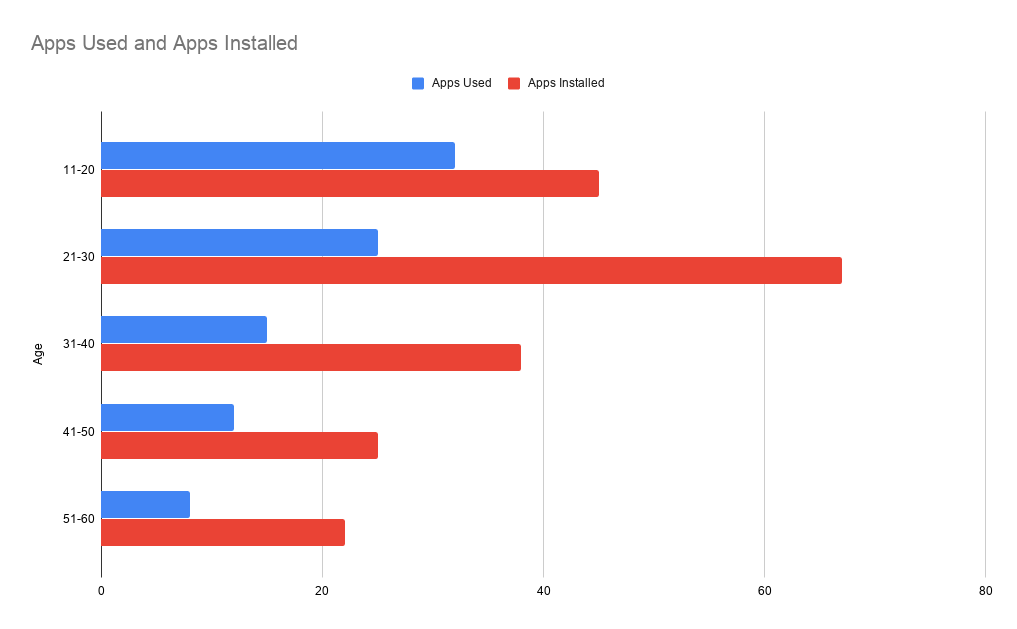
#2. Mobile App Usage Statistics by Age & Gender
As expected, younger adults spend more time on apps than older adults. There’s steady decrease in the usage for older demographics, ending with those 65+ years olds, who spend 51.4 hours a month on apps, or about 1 hour, 43 minutes a day.
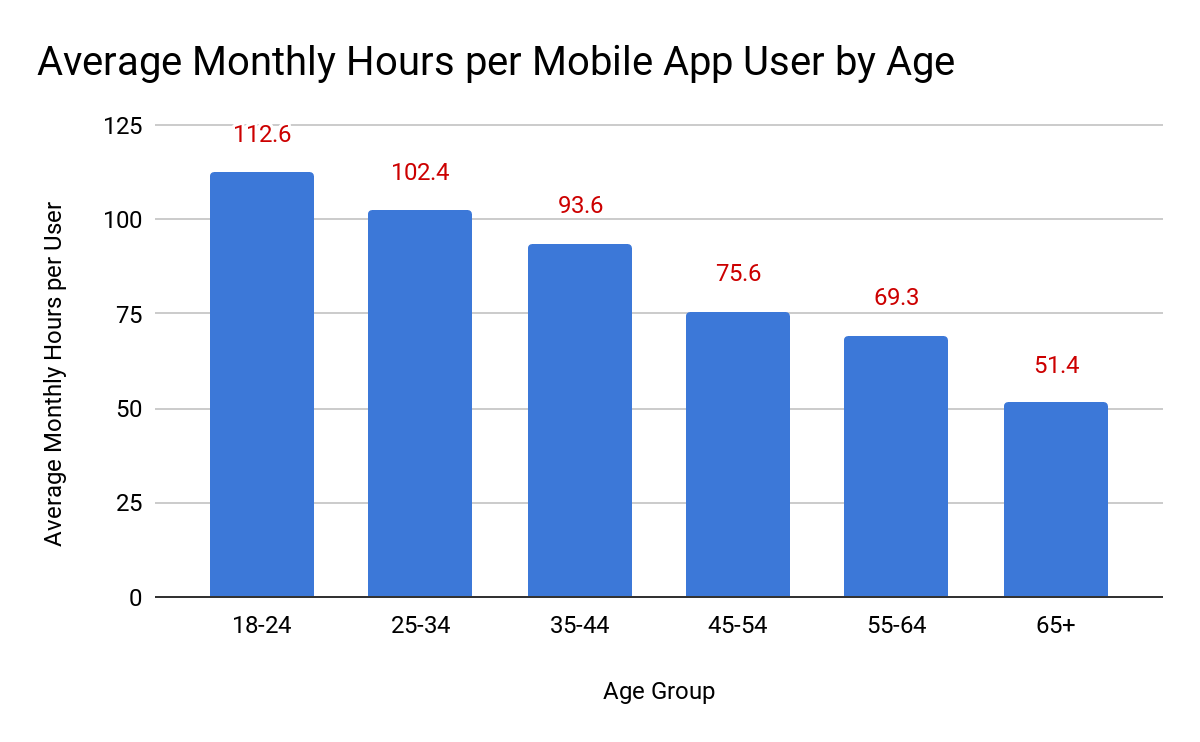
#3. What kind of apps are used most often
Now that we’ve gone through to the app usage statistics of the total apps installed vs apps “actually” used, it’s time we decode the popular categories.
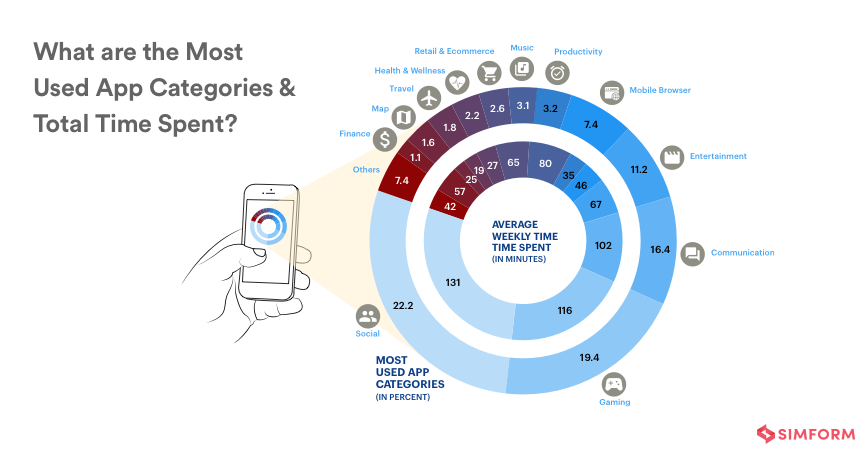
Here are some highlights from our interviews–
- About 58% of users said that entertainment apps like Social media, Gaming, and Communication were their top three most-used app categories.
- App categories with usage below 4% – eCommerce, Travel, Maps, Finance among others – were used on a need-basis.
- About 75% respondents confirmed that the top 5 app categories are the ones they engage with on a daily basis.
#4. Time of the app usage
It is observed that users spent most time on social media apps followed by Gaming and Communication apps which is expectedly in correlation with the popularity of the apps.
If we compare these app usage statistics with the app popularity of the apps we find some striking observations. Though the retail and e-commerce apps have need-based popularity (only 2.6%) but the usage in minutes is high because people take time to make decisions in buying a product. Similar deductions can be made in Finance and Music apps.
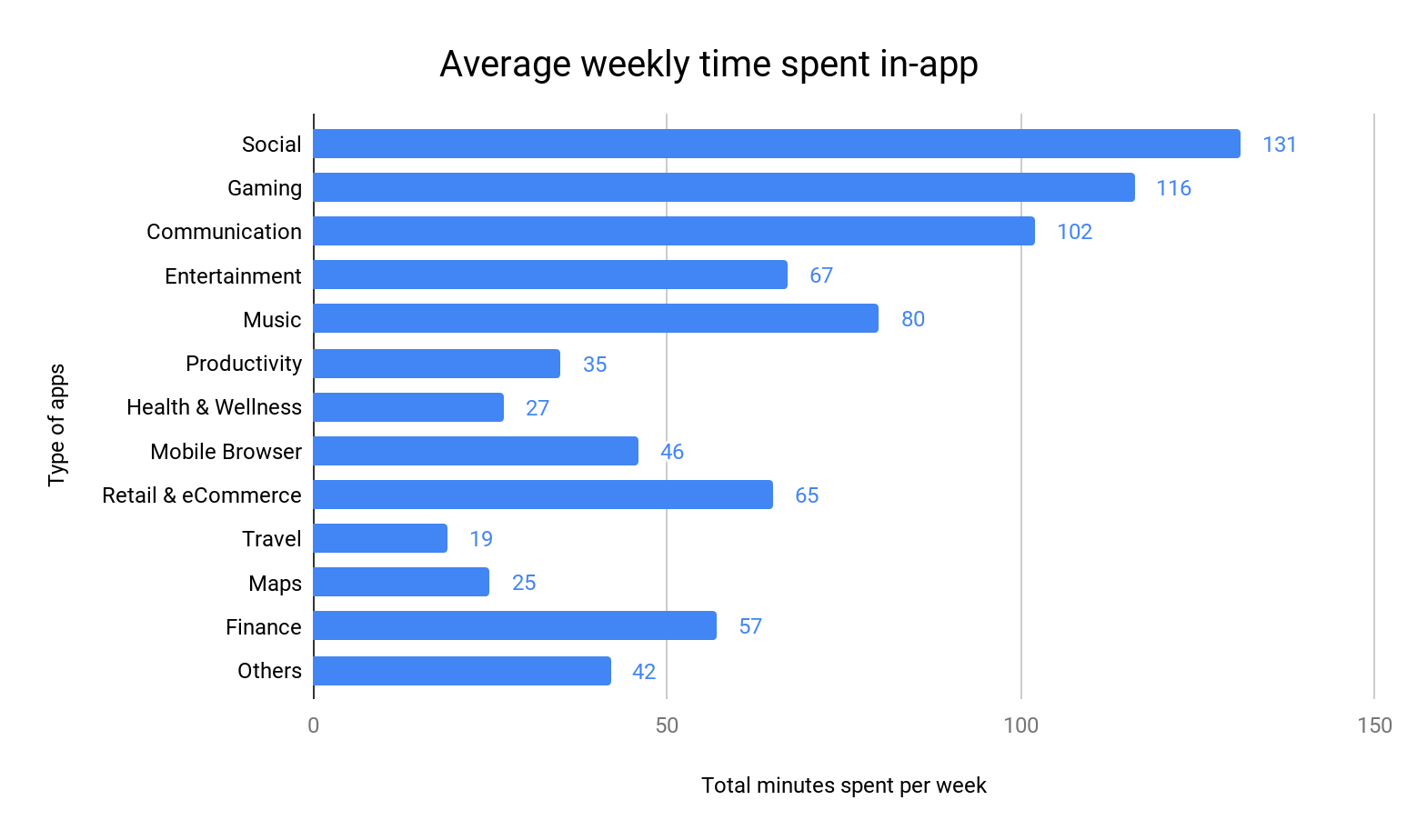
#5. How do they use the apps
It’s no secret mobile phones get around: at home, throughout the day, at work, while watching TV, during commutes, in washrooms, and beyond. Since mobile devices are (just about) always with their masters, time and location play a big role in defining their context of use.
People shift the way they hold and touch their devices depending on the input that is necessary, the position on the screen that they are trying to tap, and their context. People change the way they’re holding their phone when:
- Opening doors
- Walking down the street
- Carrying a baby or things
- Calling a cab
- Shopping
- Waiting inline
- Passively surfing while relaxing
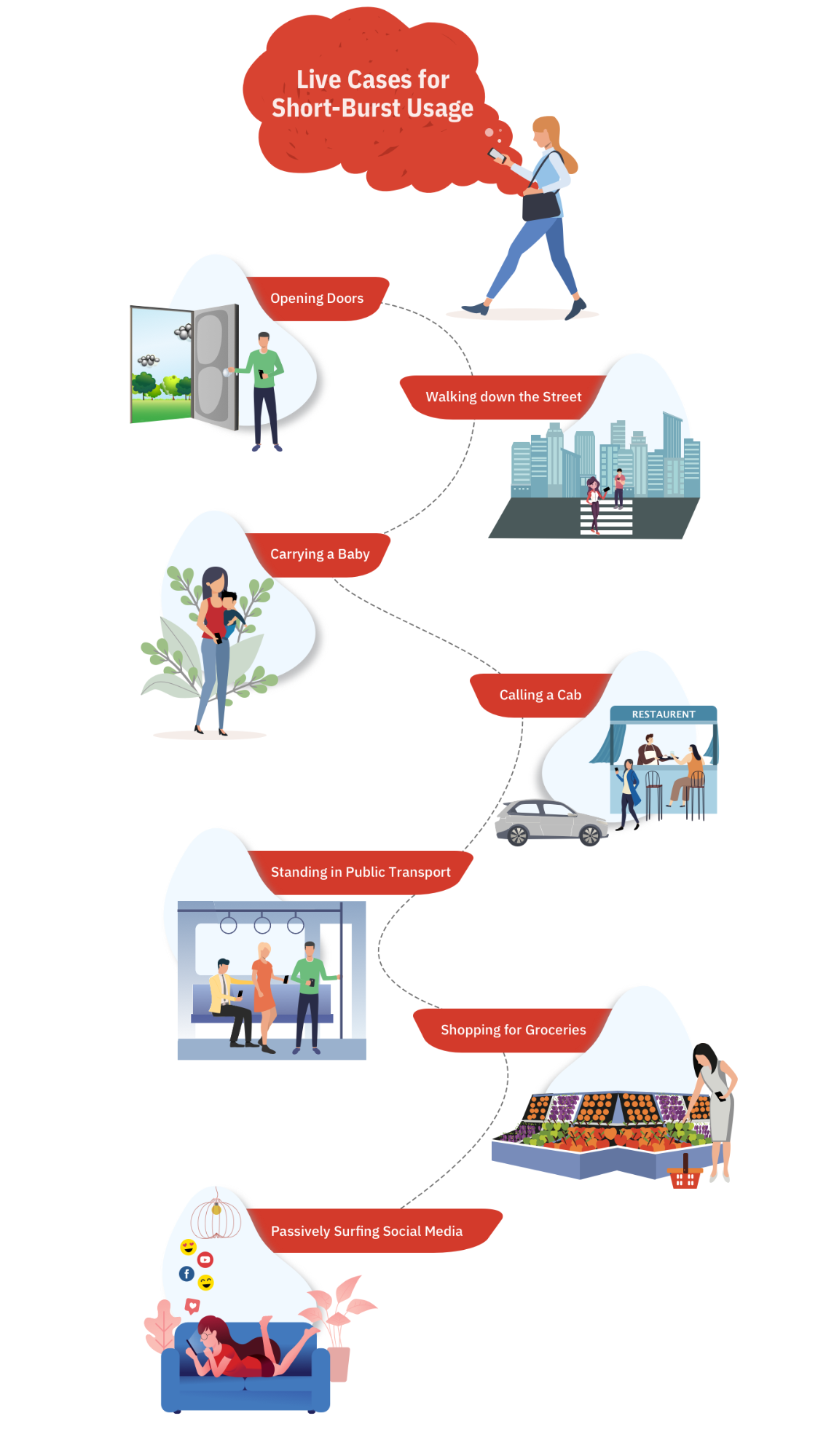
When and where are people using mobile devices?
- 91% at home
- 83% while in the washroom
- 73% while having dinner
- 72% at work
- 79% when with family/friends
- 71% waiting in lines of waiting for appointments
- 63% while shopping
- 78% while watching TV
- 62% during the commute to work
- 74% during miscellaneous downtime throughout the day
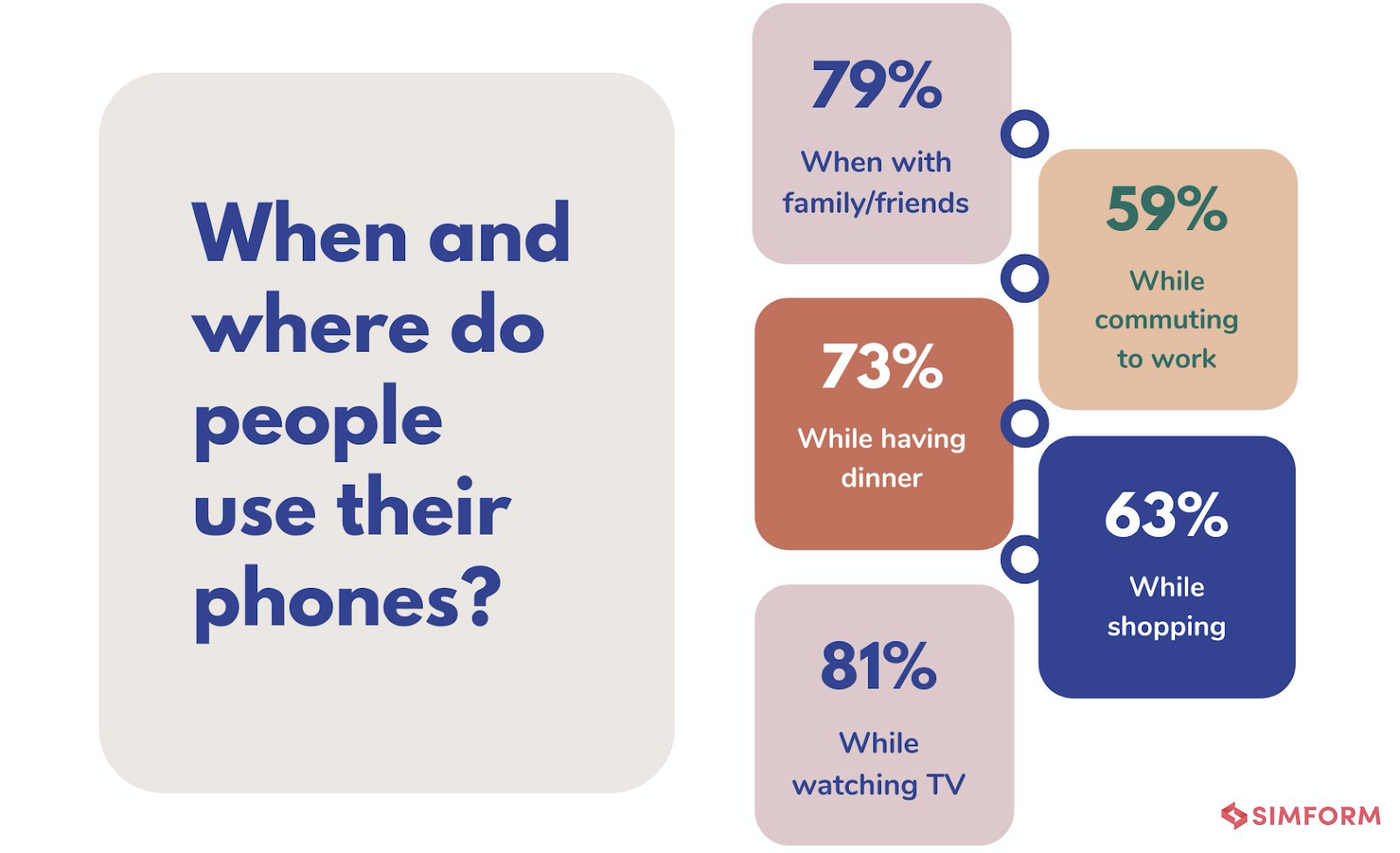
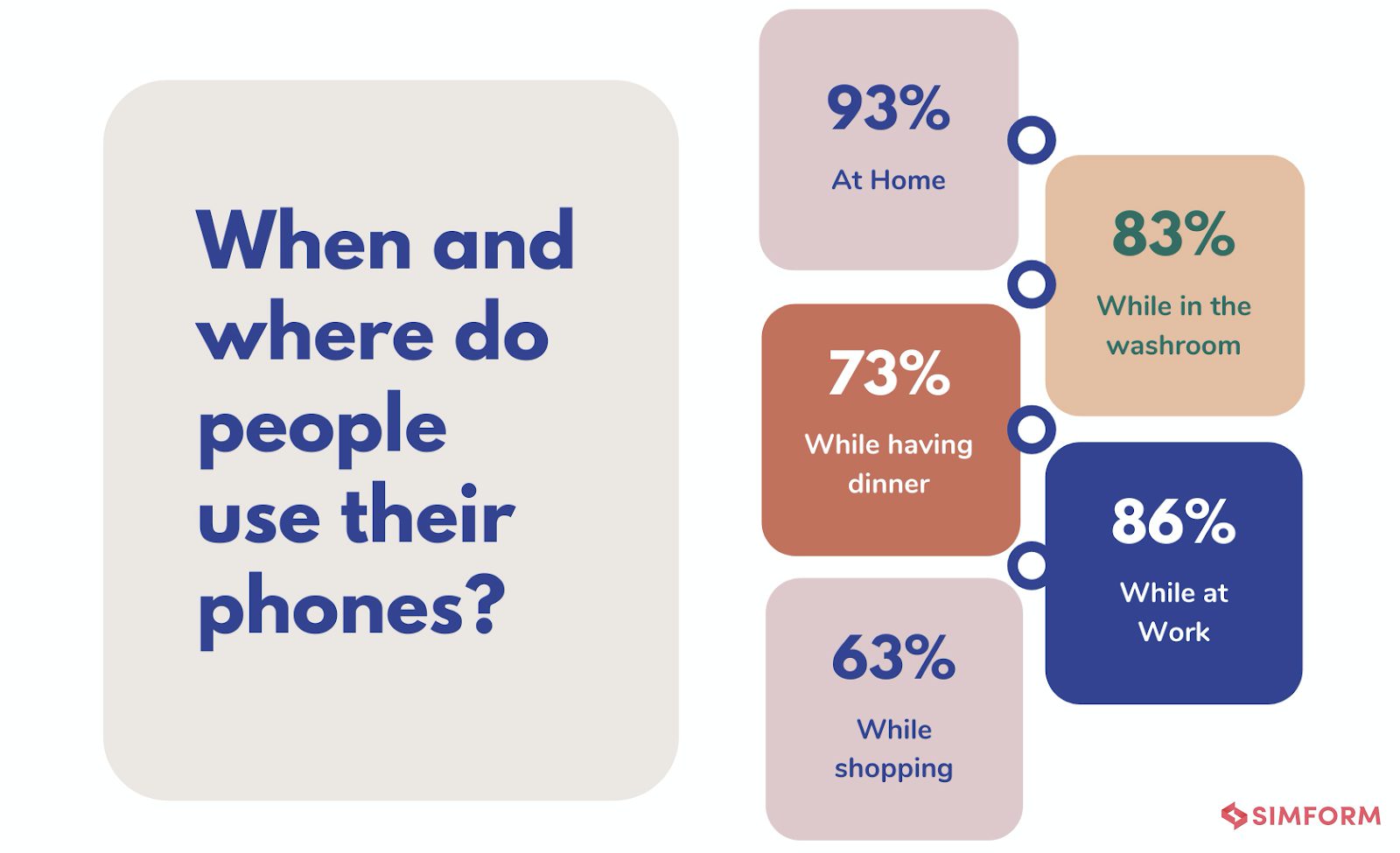
In over 43% of our observations, a user was interacting with a mobile phone without inputting any data via key or screen.
Voice calls occupied 18% of the users to show how people are making fewer calls.
While 19% user engagement were completely passive activities—mostly listening to music and watching long-form videos.
We can also figure out that those people who talk by phone mostly prefer to walk (63%), also stand (24%), but they really don’t feel like sitting much (13%).

DHANASEKHAR
Good statistics gathered and nice information, explained clearly.
Max
Great stats, thanks
63 Eye-Catching App Download and Usage Statistics | CleverTap
[…] to Simform*, if you have 40 apps installed on your mobile device, you are an average user. However, Millennials […]
Pankaj
Audience - 3756 mobile phone users - are they from US or any specific country?
Rohit
Hi Pankaj, Thanks for reading the article. These are global audience.
Kylee
Can you tell me if these are global stats and if not where do these 3756 users live? Thanks!
Rohit
These are global stats, Kylee.